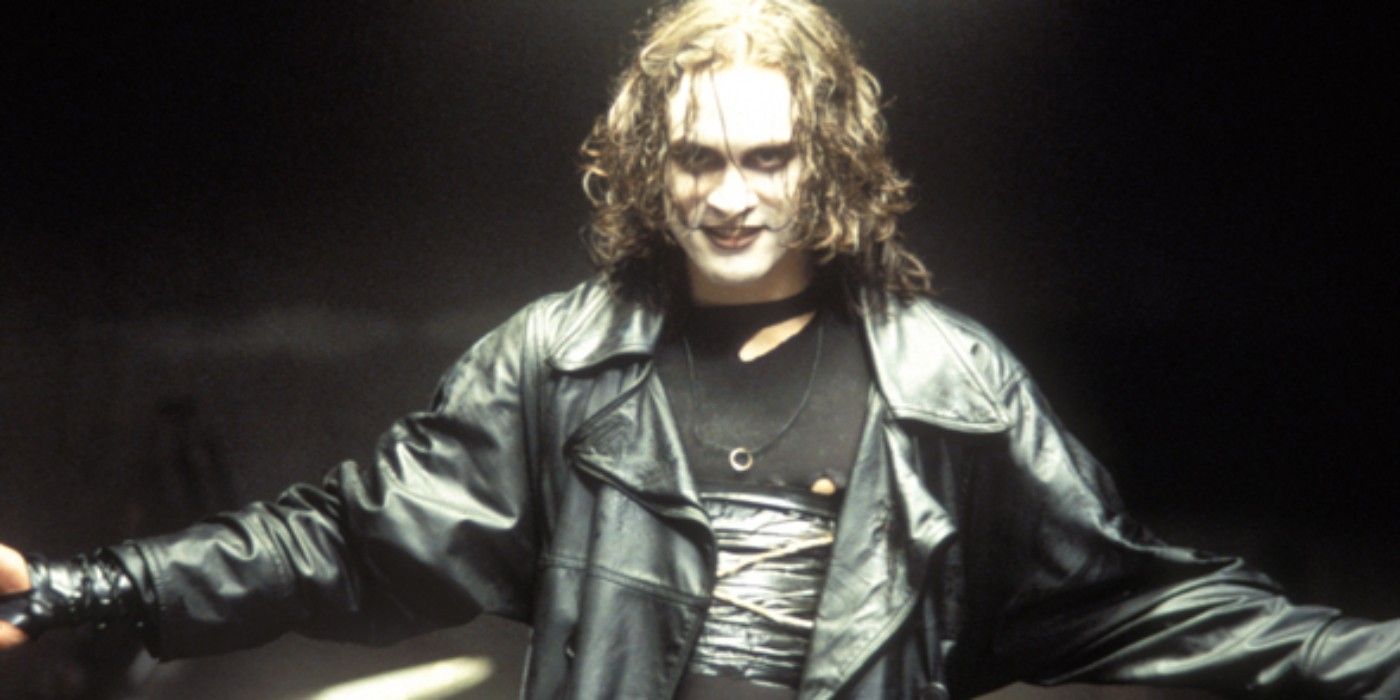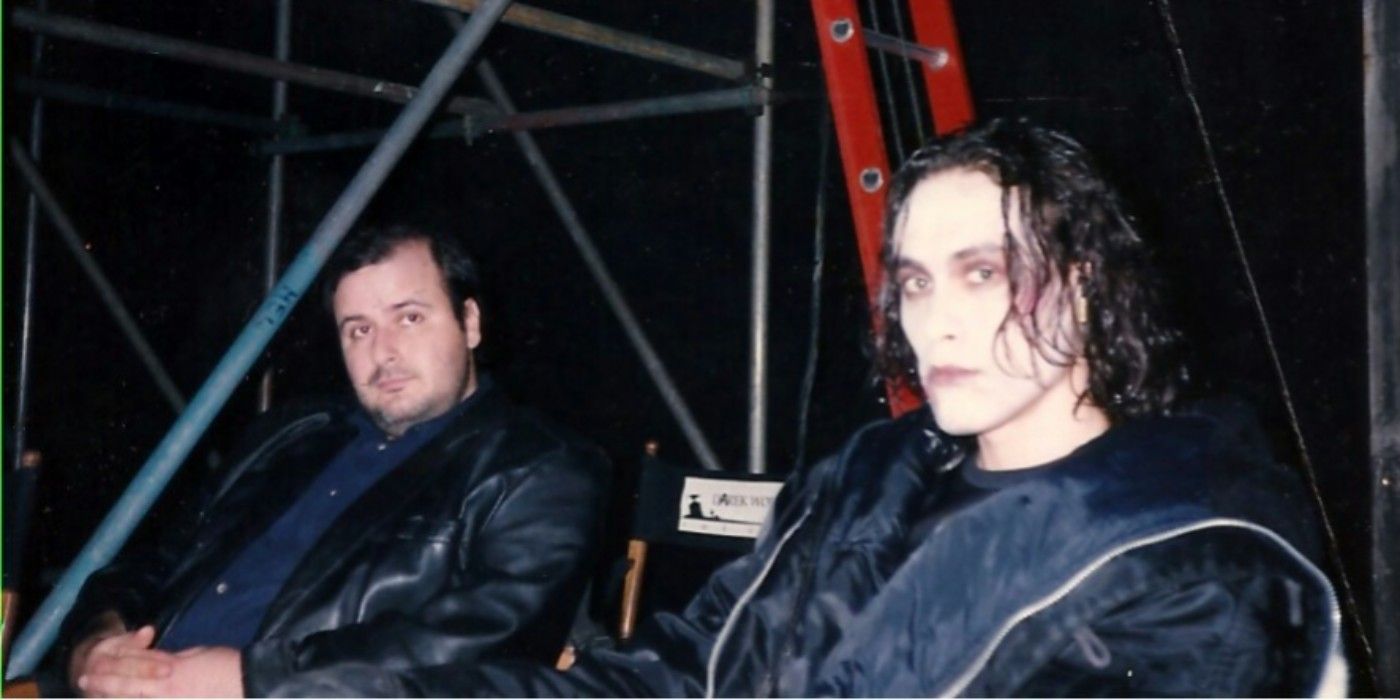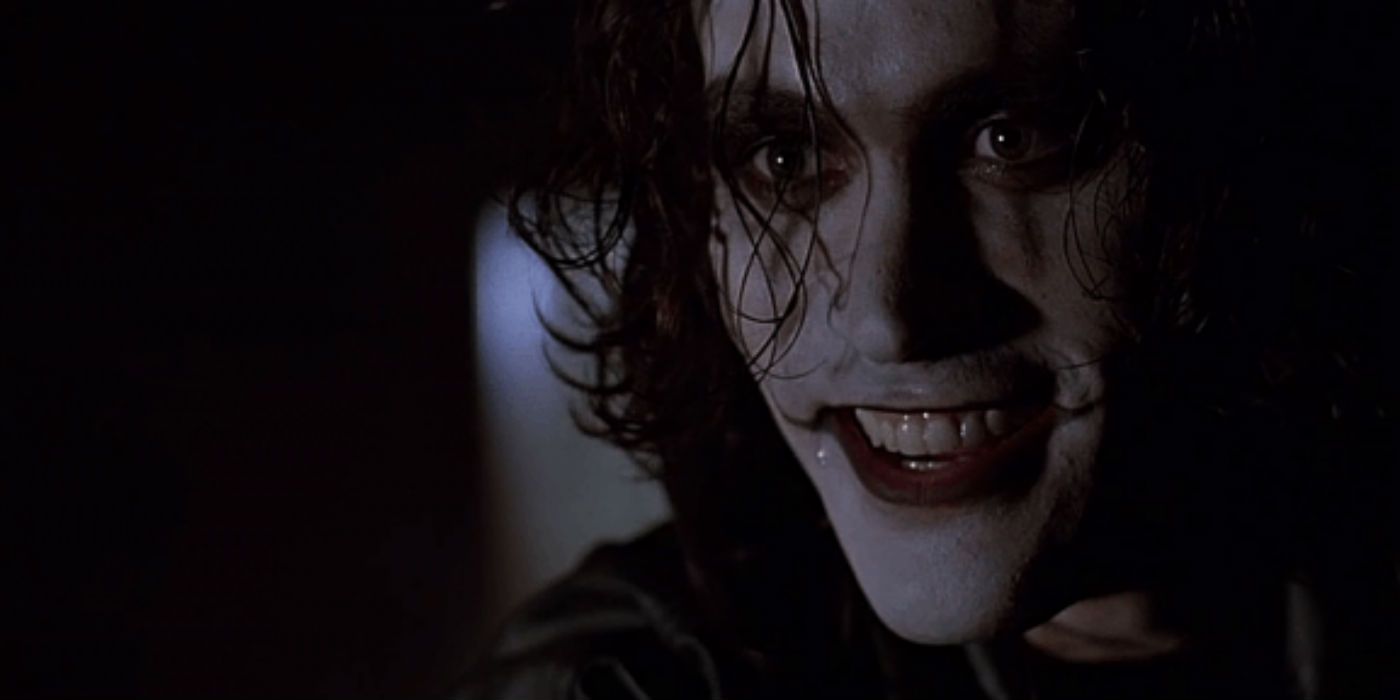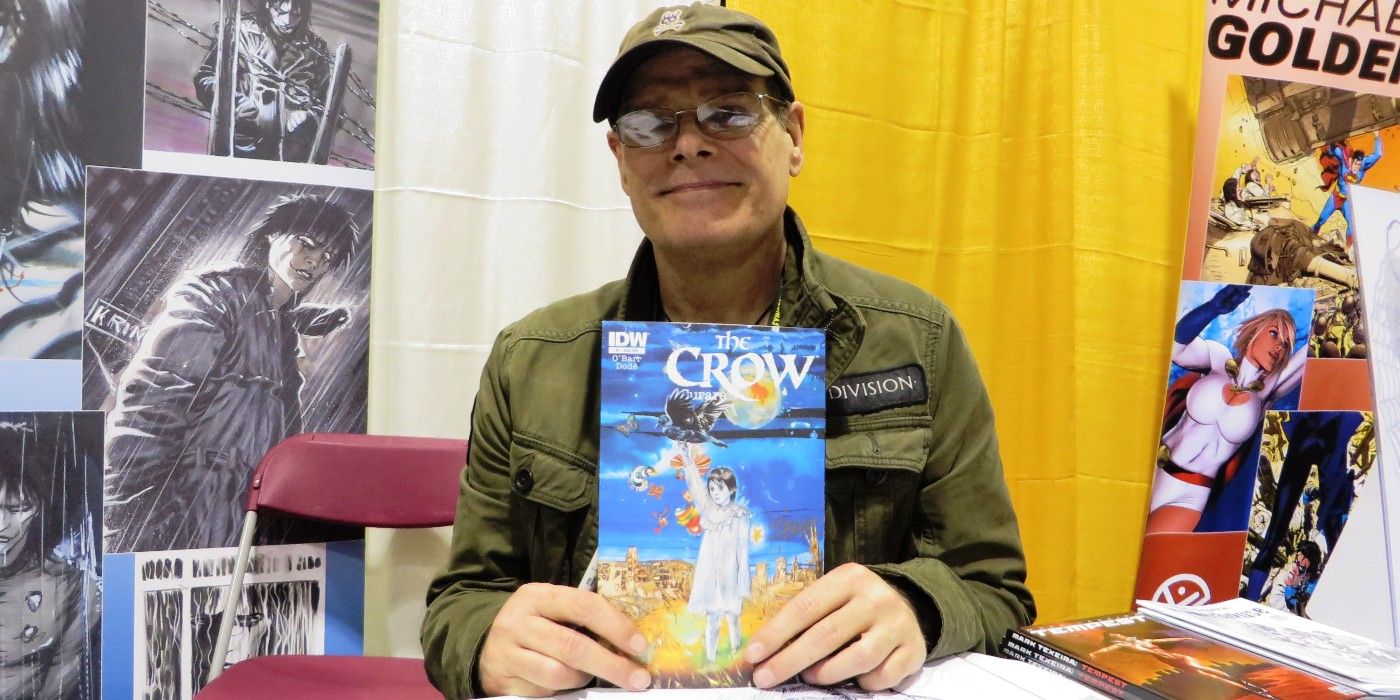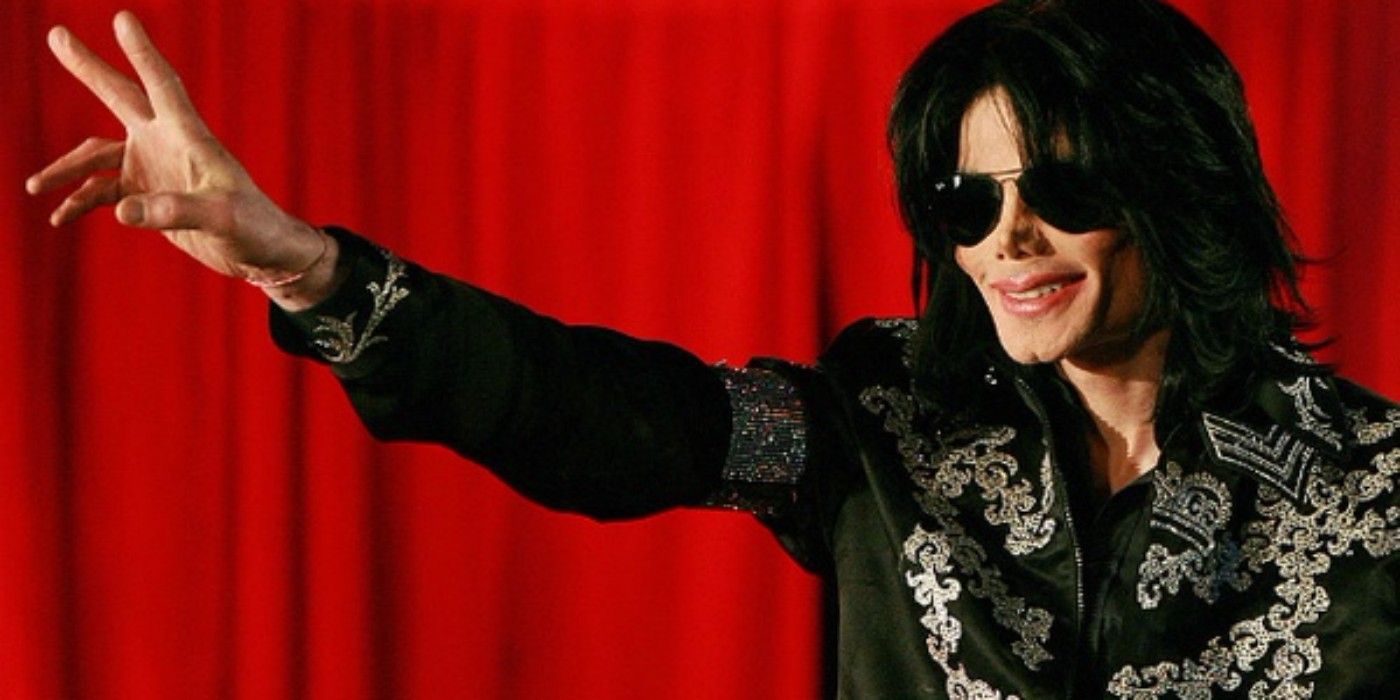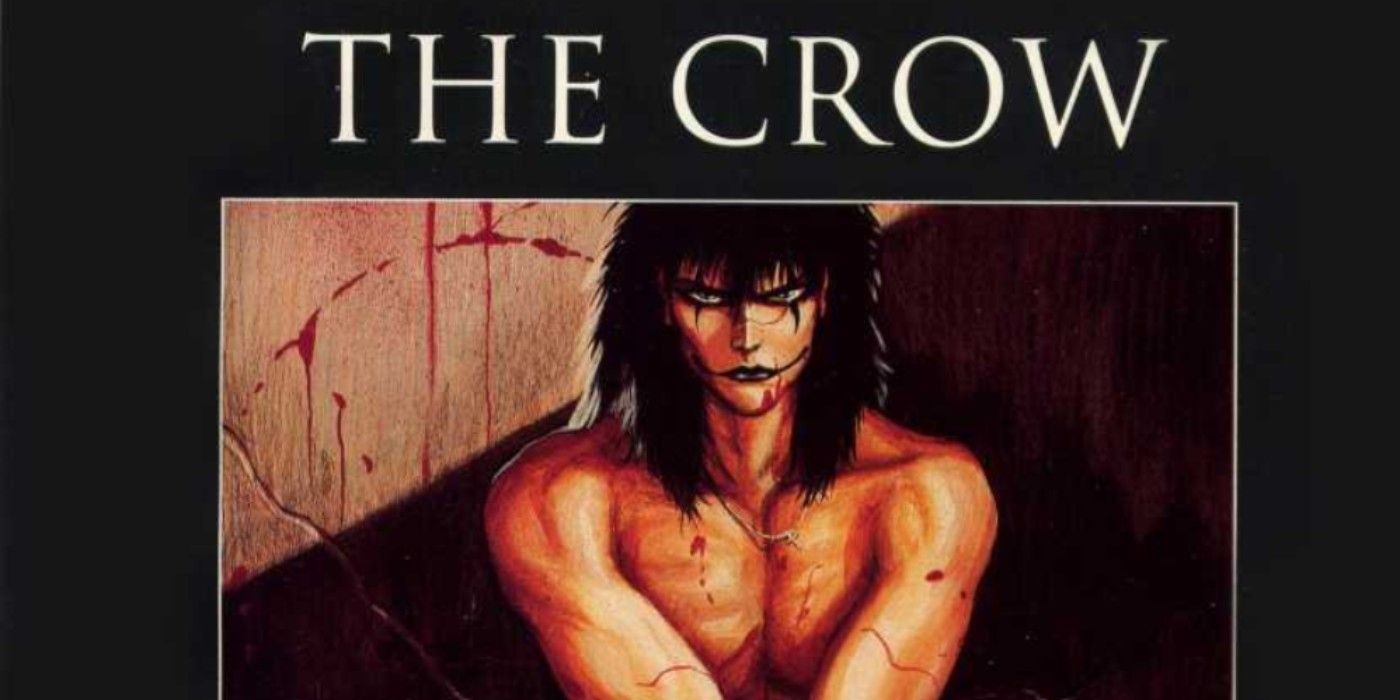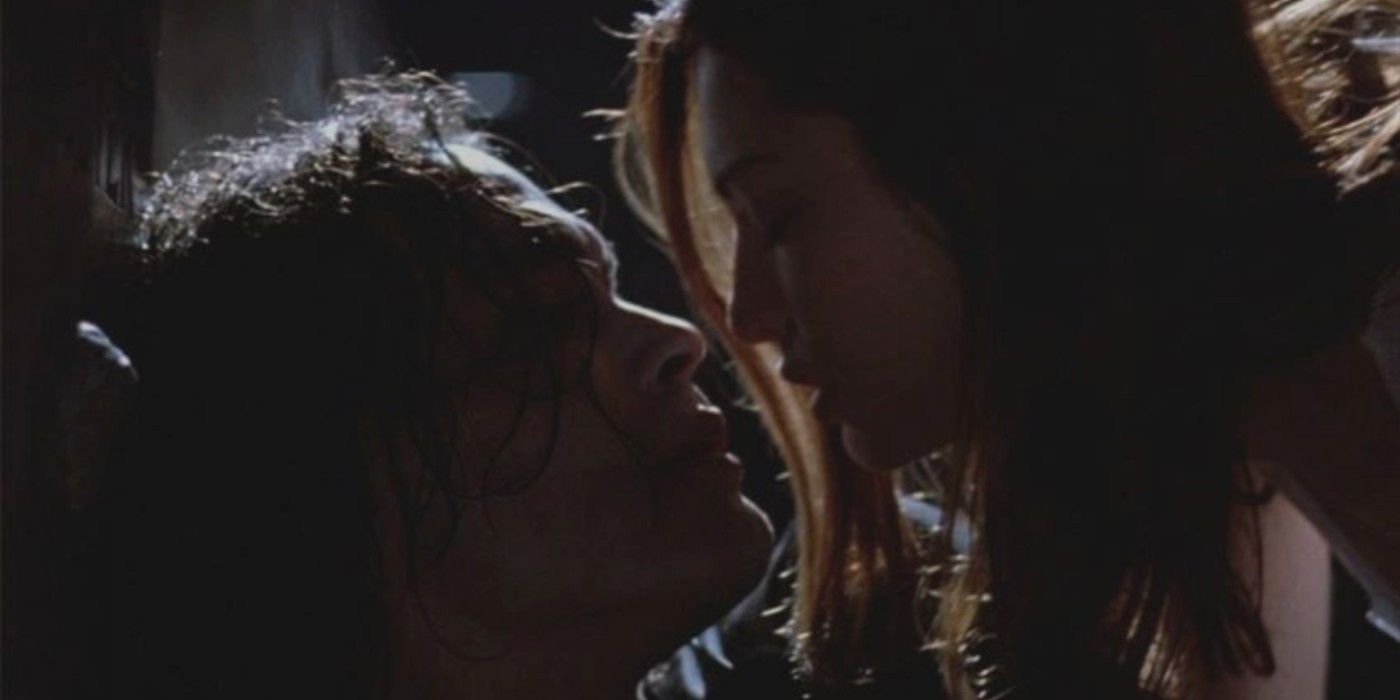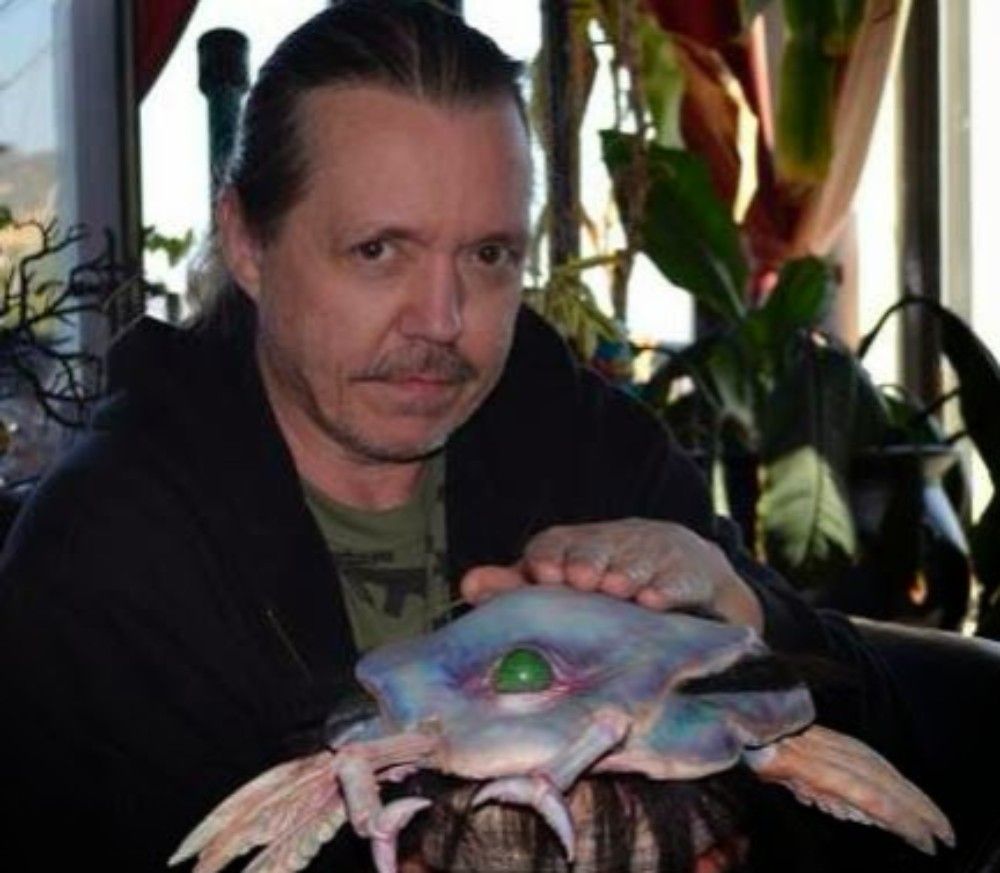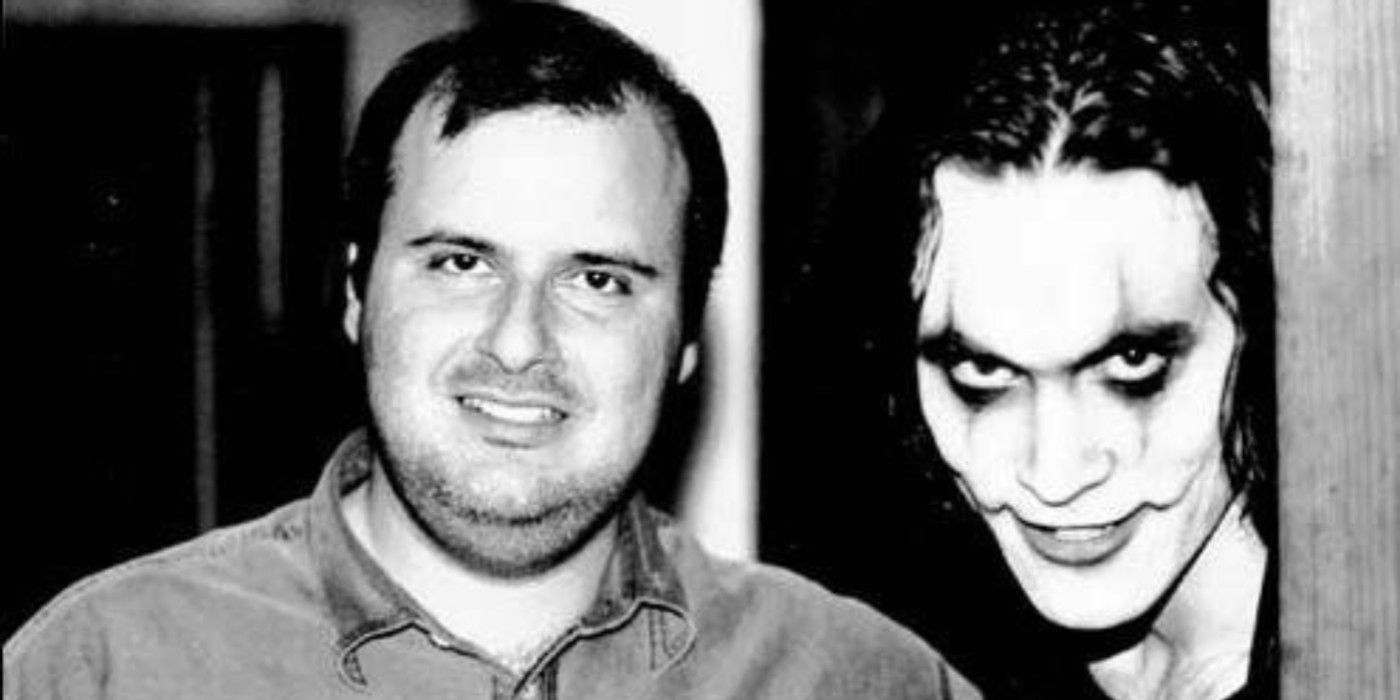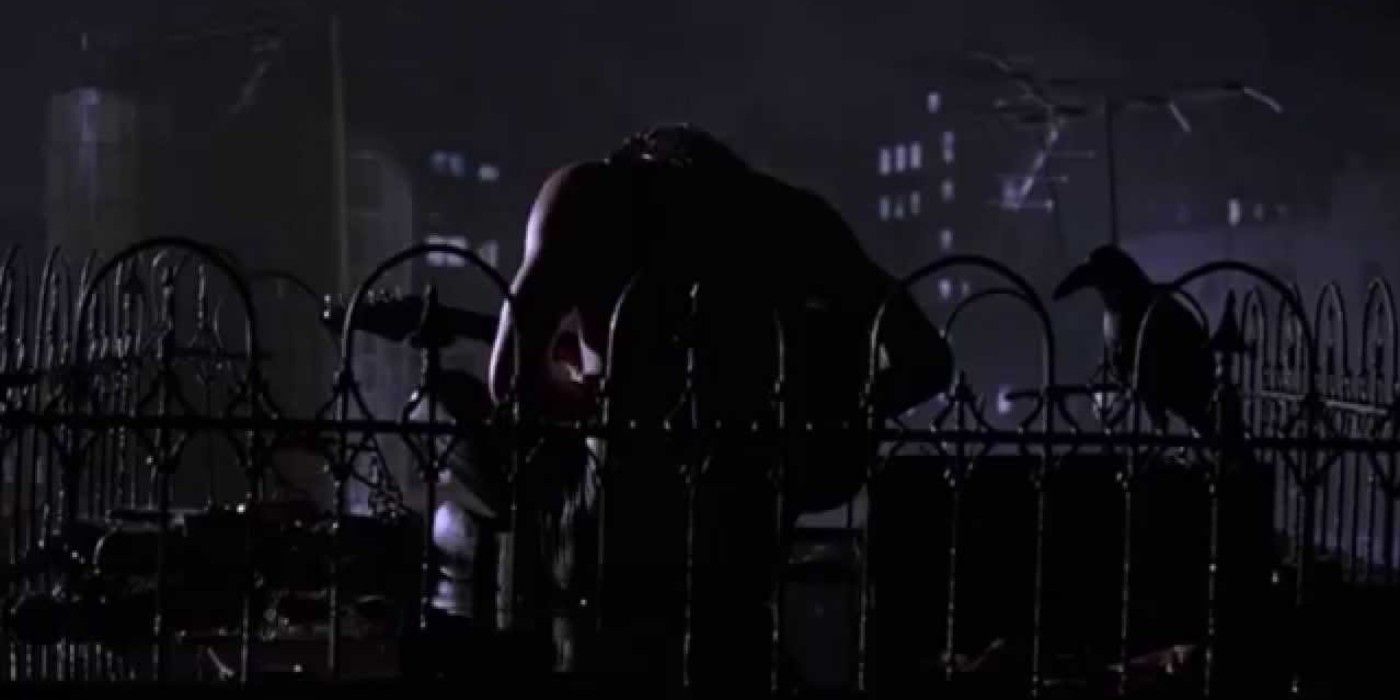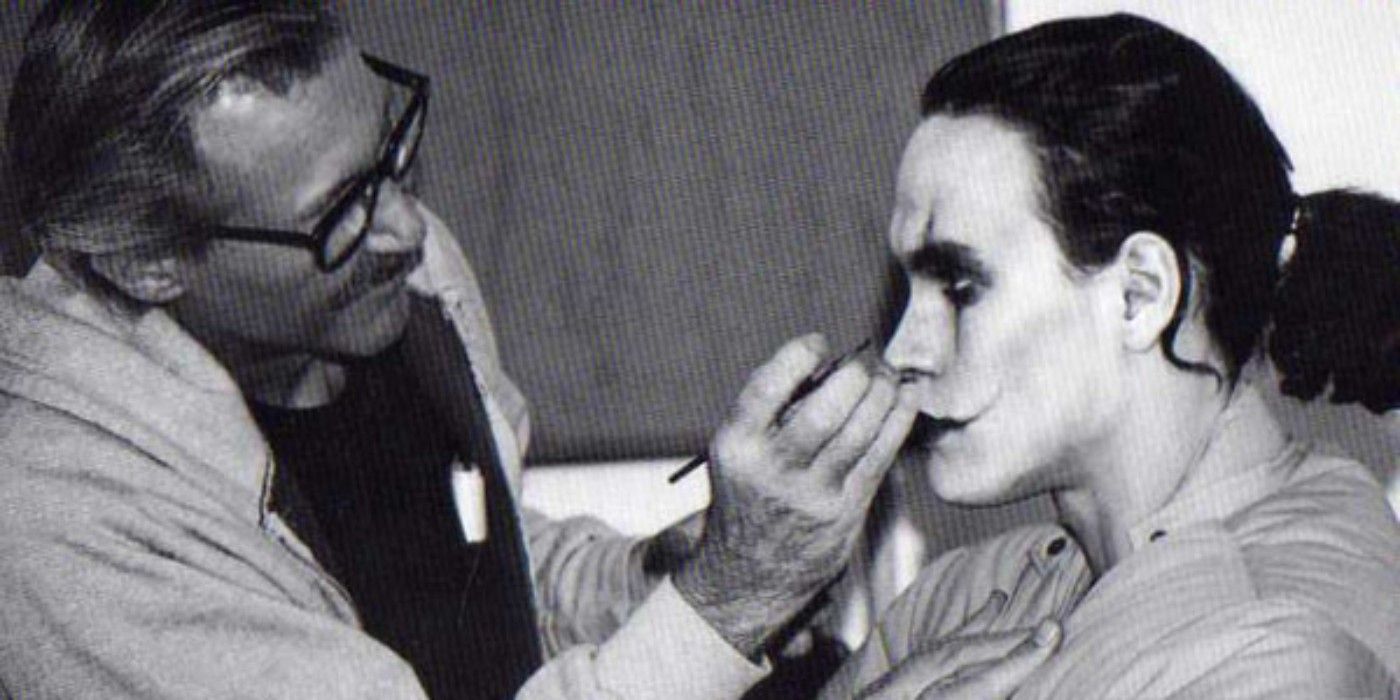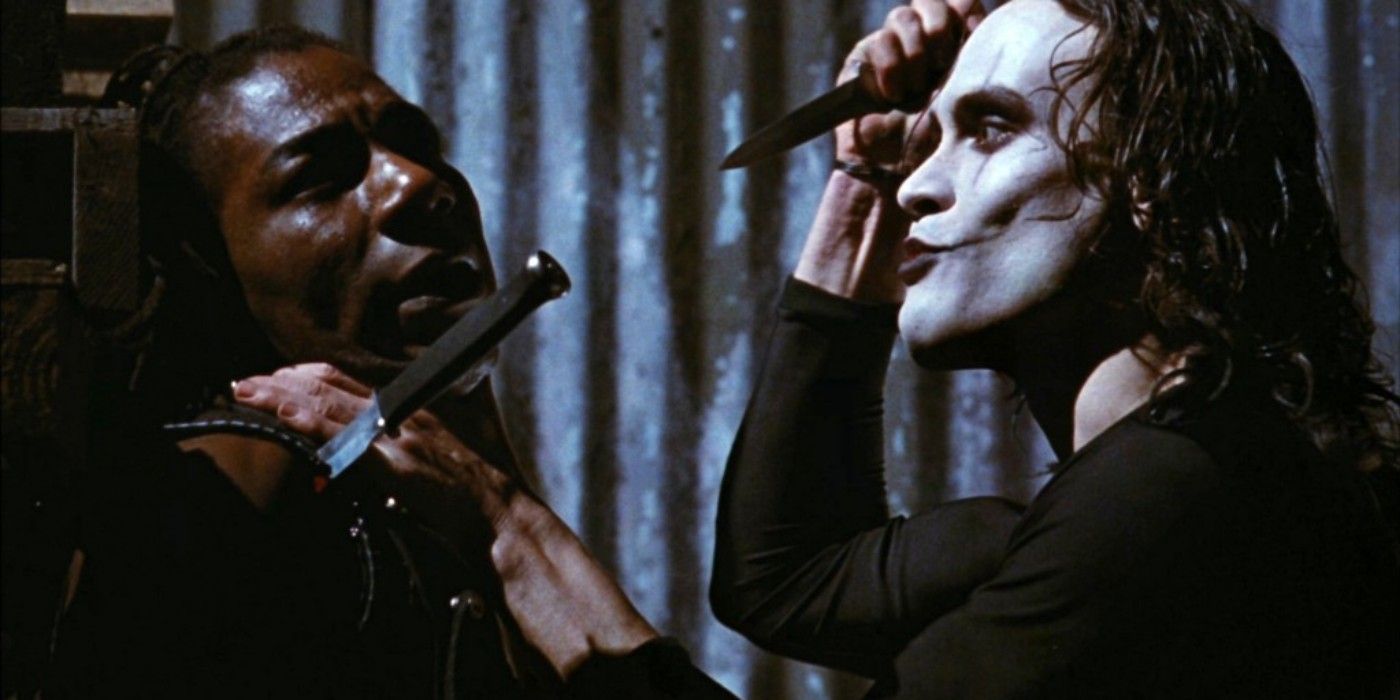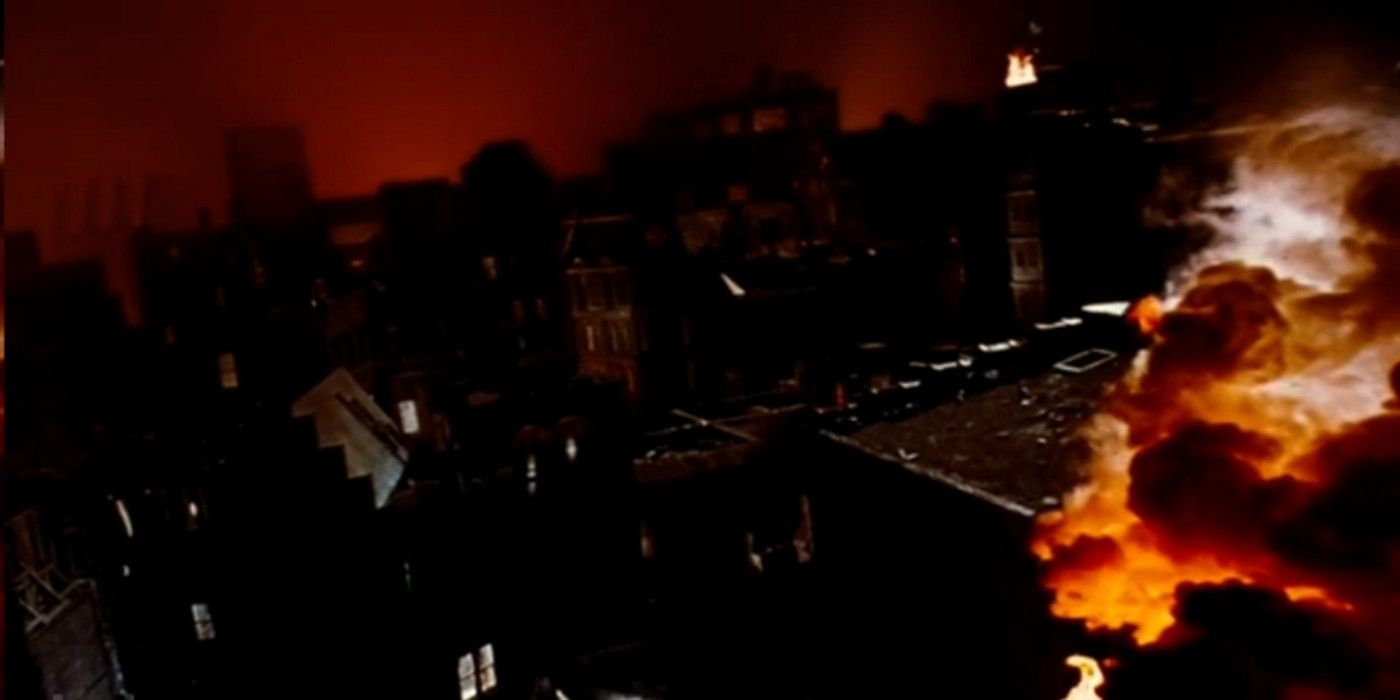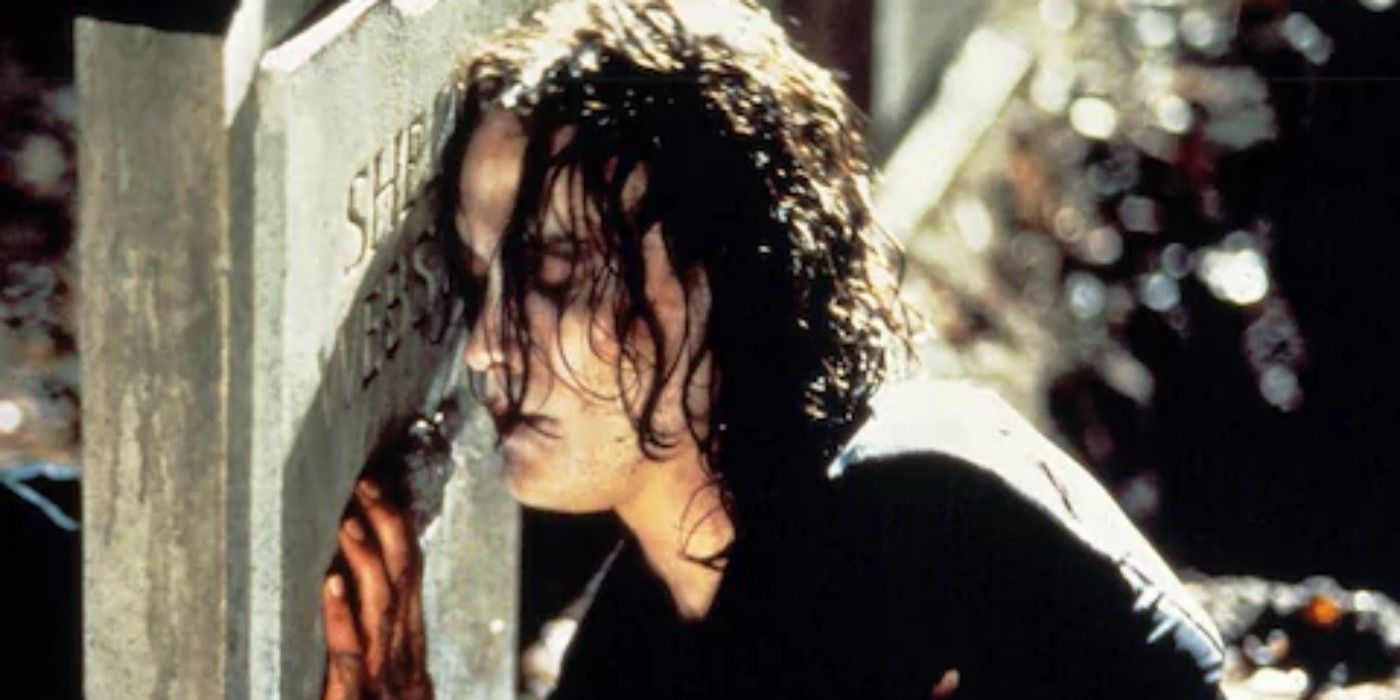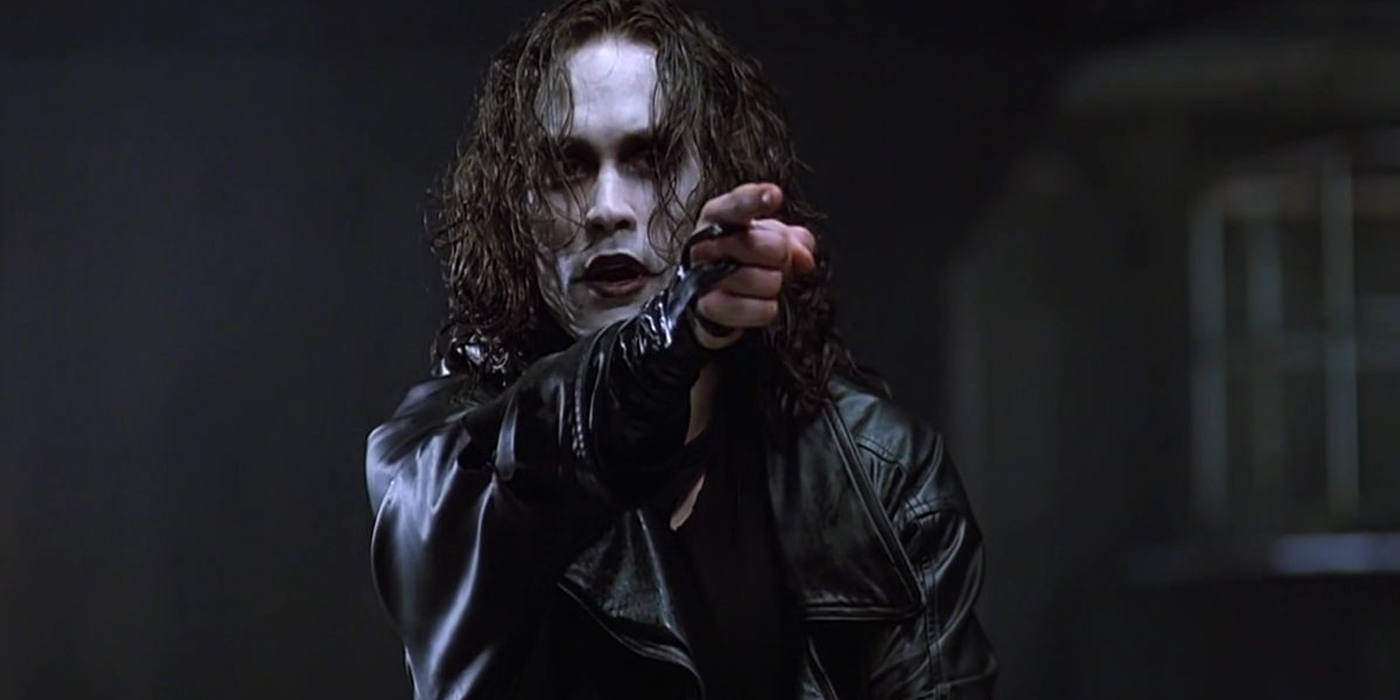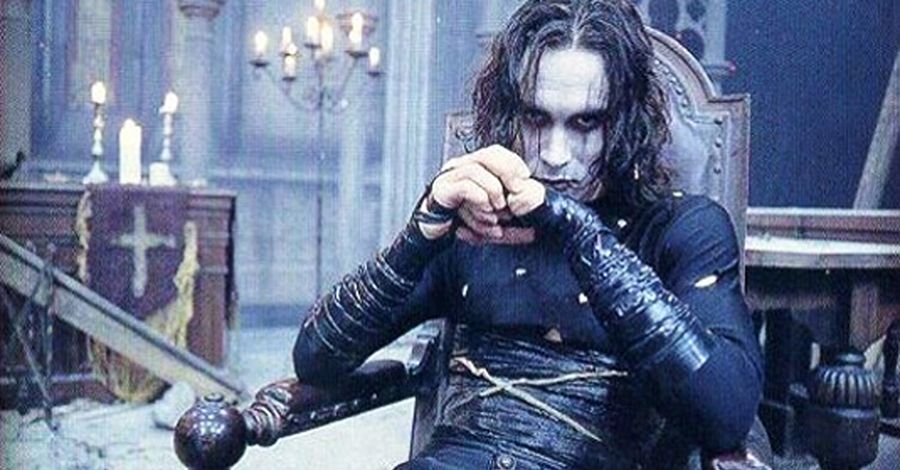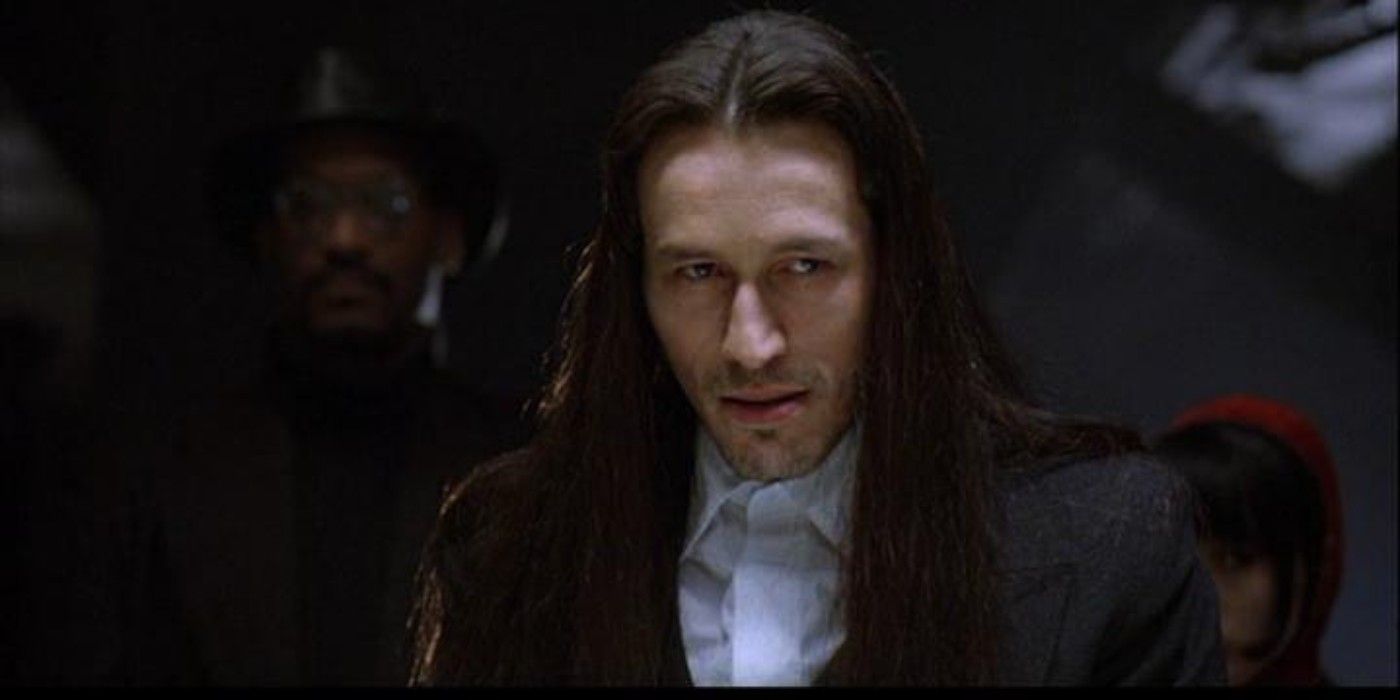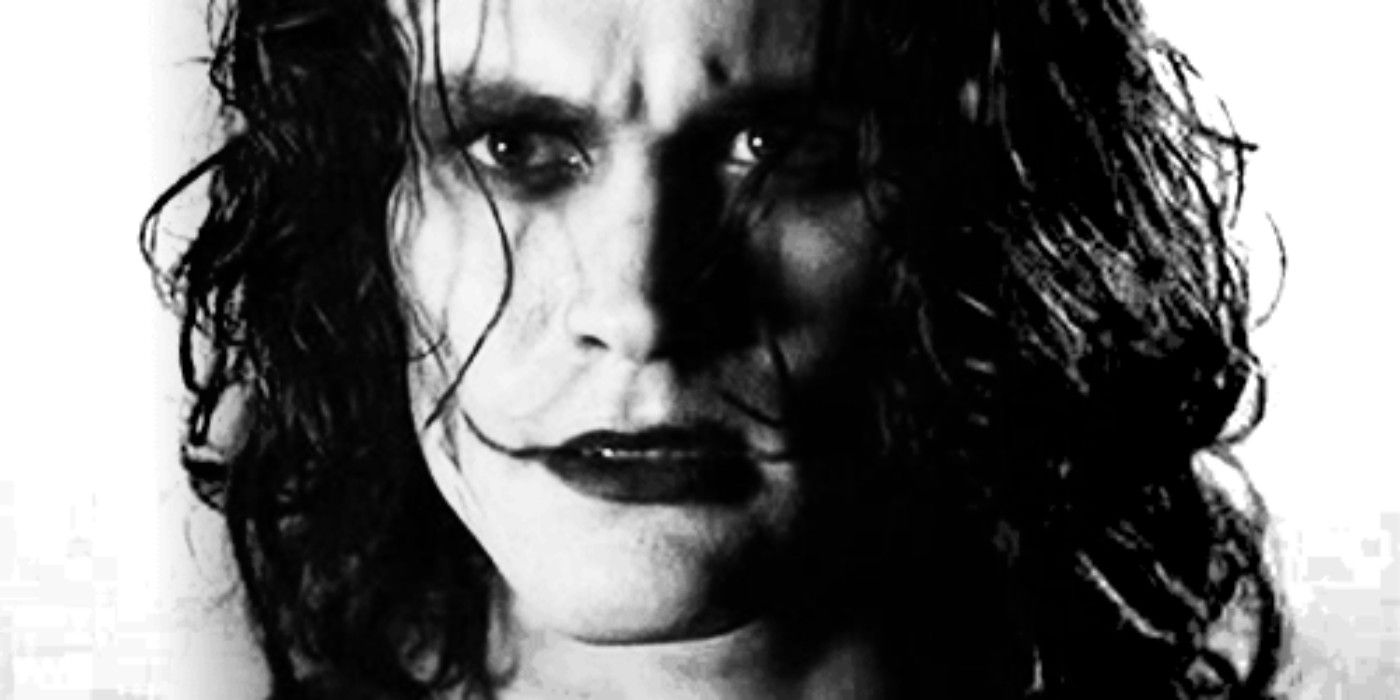A gothic action fantasy about love and vengeance dressed up in leather and facepaint, The Crow was a comic book movie unlike any other. In the same year that a low budget adaptation of The Fantastic Four was being made, The Crow was a small budget movie that packed a big punch of edgy cinematography, impressive fight choreography, and compelling story arcs. Though it may not have had a lot of extra cash to throw around, it meant that the crew had to think of unique ways to solve certain cinematic problems, resulting in more impressive visuals than expected.
Despite its many successes, the film was overshadowed by the tragic passing of its leading star, Brandon Lee, mere days before shooting was to wrap. The 28-year old son of famous martial artist turned actor Bruce Lee passed away without ever getting to know the impact of The Crow’s legacy. A cult classic amongst comic book fans and cinema fans alike, a reboot is nevertheless in development starring Jason Momoa, and we hope it pays homage to the stylish original. In the meantime, there are many intriguing facts about the 1994 film that have come to light in the years since it was released.
18 IT WAS THE NUMBER ONE MOVIE IN AMERICA
The Crow hit theaters on May 13th, 1994 and was immediately a hit. It was the number one movie in America its first weekend, and continued to gross highly. Originally, test screenings of the film had made executives wary that audiences could suspend their disbelief enough to accept that Eric Draven had come back from the dead, imbued with mystical powers, for no other reason than he wanted to avenge the death of his fiancee.
Their fears were put to rest once the box office numbers rolled in, bolstered by a well crafted soundtrack that perfectly captured the mood of the film. The main song used in the film was The Cure’s “Burn”, and the rest of the soundtrack was an edgy mix of Stone Temple Pilots, Nine Inch Nails, and bands like Bahaus that O’Barr heard when he was serving in Berlin. Roger Ebert and Rolling Stone gave the film rave reviews.
17 MISFORTUNE PLAGUED THE SET
While many film sets deal with setbacks, The Crow had a worrisome number of incidents during its shooting schedule. On the very first day of filming, a worker touched a high-voltage wire and was electrocuted on a studio backlot. In another occurance, a disgruntled employee ran their car through the studio plaster shop.
During the building of some large set pieces, a construction worker slipped, causing a screw driver to go right through his hand. One of the publicists for the film was injured in a car accident driving from set, and towards the end of filming a tumultuous storm destroyed certain parts of the set. All of the misfortune culminated in the horrible and shocking death of star Brandon Lee.
16 THE DIRECTOR DONATED MOST OF HIS PROFITS TO CHARITY
Despite the fact that The Crow was hugely successful, James O’Barr didn’t do anything spectacular with all the money he got...except donate practically everything to charity. He got his mom the prerequisite house, bought himself a fancy surround system, and then felt bad about keeping what he considered “blood money” due to Brandon Lee’s death.
He kept the secret of his charitable contribution for decades, maintaining that if people knew about it, it couldn’t really be considered charitable in his book. A self-proclaimed shy person, it took him a long time to be emotionally well-adjusted after the tragic events that surrounded The Crow. Given that he was good friends with Brandon, it only made sense that he didn’t want to profit at his expense.
15 THE COMIC WAS WRITTEN BY A MARINE
James O’Barr was drawing combat manuals in the Marines in 1981 when he decided to pen the story of The Crow. He’d recently lost his fiancee to a fatal car crash involving a drunk driver, and no amount of partying or substance abuse could numb him from the pain. He’d also recently read a headline involving a couple murdered over a $30 engagement ring, and thought the pair would make good protagonists for his story.
That the anguish imbued in The Crow is based on real events gives another dimension to its immersive world of grief and loss. O’Barr hoped that through the comic, he could not only find a way to channel his anger, but also have a way for love to transcend death. Love’s endurance would become a focal point of the film.
14 IT WAS ALMOST A MUSICAL WITH MICHAEL JACKSON
The tone, ambiance, aesthetic, and general mood of The Crow is pure gothic cheese, and yet there is an earnestness to it that yearns to be taken seriously. Thanks to top notch performances by all players who know when to mug and when to wink at the audience, it neither takes itself too seriously nor is ever too ridiculous. However, had early suggestions been taken into consideration, it would have been a musical starring Michael Jackson.
Paramount executives thought the look Jackson brought to his music videos for "Bad" and Dirty Diana" was perfect for Eric Draven. Plus Eric was a musician, so to them it only made sense that there’d be songs in it. When it was brought to author James O’Barr, he purportedly laughed hysterically before rejecting the idea, afraid every fight scene would look like something out of the gang violence in West Side Story.
13 THE MOVIE WAS MADE FAST TO COINCIDE WITH THE THIRD ISSUE
The Crow comic book hit the stands in 1989 after much fine tuning from author James O’Barr. He was working in an auto body shop at the time, and was offered a hefty sum for all the rights to The Crow in perpetuity by a Hollywood director. While it was a lot of cash, O’Barr consulted a Hollywood agent and was advised against the deal.
As luck would have it, he was approached again, but this time by a writer and producer interested in helping The Crow movie get wings without O’Barr having to sell his copyright. He get a lot less money than he would have on the first deal, but the movie was made his way, with a lot of creative input, and he still got to keep the brand for future endeavors.
12 THE LOVE STORY WASN’T AS PROMINENT IN THE COMIC
While the overarching theme in the film is the eternal endurance of love, it wasn’t as prominent in The Crow comic book. Author James O’Barr was working through the loss of his fiancee at the hands of a drunk driver, and a lot of the comic dealt with how protagonist Eric Draven dealt with the death of his fiancee Shelly. Eric Draven was a heavy drug user, an element which was eliminated in the film.
There was an obvious amount of violence and mayhem, and long passages wherein a messenger from the afterlife named Skull Cowboy visits Eric and explains to him the responsibilities and parameters of his new identity as “The Crow”, a spiritual entity that inhabits a deceased person so that they might have the strength to enact vengeance on whomever did them wrong in life.
11 THE SCREENPLAY WAS CO-WRITTEN BY A HORROR WRITER
When the first drafts of the script were exchanged between writer John Shirley and author James O’Barr, he was worried that too many changes to his comic had been made. While he could understand downplaying the hero’s drug use and the removal of minor characters, he felt it was going in an uncomfortable creative direction. David J. Schow, writer of Leatherface: Texas Chainsaw Massacre III as well as Critters 3 and 4, came on board to collaborate and return the story to its core concepts.
It was Schow that axed a lot of superfluous villains in favor of one main baddie and a hierarchy of minions, as well as making “Devil’s Night”, the famous night before Halloween known for arson and calamity in Detroit, the main reason for the attack on Eric and Shelly. He also made Eric Draven the “Gothic, rock and roll Terminator” we see on film.
10 A MUSIC VIDEO DIRECTOR SHOT IT
In the ‘90s, Alex Proyas was the director everyone wanted to work with, even though he hadn’t directed a single feature film. His work was all in music videos and commercials, but his style was fresh and inventive, and he was just waiting for the write project to give his signature touch. He felt that The Crow was just the sort of movie to start his career in cinema, and became part of the team in 1991.
While initial concepts for the film involved it being a musical starring Michael Jackson of all people, the addition of a music video director meant slick camera work, stylish set pieces, and great costumes, all of which were perfect for a movie about a dead rock and roll musician who comes back to life to avenge his fiance's death.
9 A ROCKSTAR ALMOST PLAYED ERIC DRAVEN
Since The Crow is about a dead rock and roller, it makes a certain sort of sense that a musician should play him. That is, if there was a big focus on Eric Draven actually playing music in the film, but there’s only one brief scene where he plays his guitar. Producers first wanted Charlie Sexton, a rocker from Texas, but when it was clear that more acting, and less singing was required, they quickly started to look for young actors that could pass as a musician but still carry the dramatic elements.
Not only did the actor have to be able to lend somber sincerity to the role of Eric Draven, but he needed to be able to perform all the fight choreography. Though Brandon Lee only had a few small film credits to his name, he was more than capable of meeting all their requirements.
8 THE MAKEUP WAS SURPRISINGLY DIFFICULT TO GET RIGHT
Yes, Eric Draven’s makeup looks a little like KISS meets Alice Cooper, but James O’Barr denies that the two artists were any inspiration. Instead, he attributes the uniquely fanciful look to the harlequin mask he saw on the side of a theater in London. He thought it would be particularly poignant to have a character that was in such despair to have a smile perpetually on their face.
The grease paint took about an hour to apply to actor Brandon Lee’s face, except no one was happy with the fact that it looked so neat. The perfectly applied presentation was at odds with the manic, anguished nature of the character. This led to director Alex Proyas suggesting that Lee apply the paint himself, and then sleep in it overnight, so that he could show up to set with a makeup look that was worn in.
7 THE CAST GOT INTO CHARACTER IN CRAZY WAYS
The cast was quite a colorful crew of misfits, with most of the shenanigans coming from the villains gallery that made up Top Dollar’s nefarious gang of henchmen. Laurence Mason, who played Tin Tin, underwent extensive knife throwing lessons to be able to believably and accurately play a knife-throwing hooligan. It heightened the authenticity when he squared off against Eric Draven.
Michael Massee, who played Funboy, spent time meticulously building a wardrobe for his character inspired by Iggy Pop, greatly enhancing the flamboyant elements of his character. Michael Wincott, who played Top Dollar, read extensively on the occult and honed his fencing skills, since Top Dollar was both a mysticism junkie and a sword collector. It also helped him look believable dueling Draven on the rooftop of a gothic church at the film’s finale.
6 TONS OF PRACTICAL EFFECTS WERE USED
On a tight budget of roughly a million dollars, which is couch change by today’s comic book movie standards, The Crow managed to create some impressive visuals using practical effects and camera trickery. The opening sequence involving Devil’s Night where Top Dollar’s gang lights fire to what looks like the whole city of Detroit wasn't made using CGI (which was just becoming available), but projection technology. A screen was set up against a miniature set of Detroit on which flames were projected on multiple passes.
For the iconic scene where Eric Draven dumps a bunch of engagement rings into his shotgun barrel, the crew this time went big and dropped several overly large rings towards a round tube through a cloud of smoke, creating the illusion that you’re seeing the rings tumble down the barrel of a shotgun from the perspective of the barrel.
5 BRANDON LEE'S DEATH
Though the event was widely publicized in 1993, the circumstances surrounding star Brandon Lee’s death just days before filming was to wrap have always been nebulous. Due to the fact that Lee’s famous father, Bruce Lee, had died at the similarly young age of 32, some believed his son’s death at just 28 was due to a family curse.
In an eerie turn of events, the last days of shooting were devoted to filming the flashback scenes of Eric Draven’s death. He was to walk into his apartment to find his fiancee Shelly being degraded by Top Dollar’s henchman. Funboy pulls a .44 Magnum and shoots him, and he slumps to the ground. The crew only realized Lee had actually been seriously injured when he didn’t get up after the director called cut.
4 BRANDON LEE’S DEATH WAS RULED ACCIDENTAL
The tragedy of Brandon Lee’s death wasn’t due to foul play by Chinese gangsters or a family curse like many theorized; it occurred because of an accident due to a rushed schedule and grueling hours. In the flashback scene where Funboy shoots him for interrupting the degrading of his fiancee, a combination of dummy and blank bullets were used.
For the hero shot, dummy bullets (bullets without powder) were used, and for everything else blanks were used. Because the film was behind schedule, dummy bullets were hastily made from real bullets, and a lead tip from one of them became lodged in the gun barrel, so that even after the switch to blanks was made, firing one sent the lead tip towards Lee and punctured the stem of his aorta.
3 SEVEN SHOTS WERE DONE USING DIGITAL TECHNOLOGY
Due to the fact that Brandon Lee died before the film was completed, VFX company Dream Quest Images was contracted to finalize seven shots. They took footage filmed previously, such as Lee stumbling down a flight of stairs, and used it to film him entering his abandoned lot, superimposing a matte painting of a door for him to enter.
For the shot where he stands in front of a shattered mirror in his apartment, they took another image of him and composited it over each broken mirror shard using a stand in as a guide. Stand ins had to be used for all the shots, but they were often shot over the shoulder or with another image of Lee superimposed over them.
2 MICHAEL WINCOTT AD-LIBBED MOST OF TOP DOLLAR’S LINES
Top Dollar is a unique character and an enigmatic villain, with his long black hair, 19th century garb, Southern drawl, and eye for medieval weaponry. He is played by the gravel-voiced Michael Wincott, who was popular in the ‘90s for playing villains in movies like Kevin Costner’s Robin Hood, Disney’s The Three Musketeers, and Along Came a Spider. By starring in period adventure features he had extensive fencing experience under his belt, which he further honed to make the threats of his character particularly lethal.
Where Wincott shines is with his extensive monologues on everything from capitalism, to the seven deadly sins, to matters of heaven and hell. The eccentric delivery of his lines as well as their content was no accident; he often ad-libbed lines on the spot which were kept in the final cut of the film for their lyrical and poetic quality.
1 IT SPAWNED SEVERAL SEQUELS
Though James O’Barr didn’t intend for The Crow to necessarily become a franchise, he knew the potential was there. Since he didn’t have to sell the copyright to get the movie made in the first place, he was free to license the material out to anyone eager to put their own creative stamp on the supernatural storyline. If only that creative stamp were of the same quality as the first film but alas, The Crow: City of Angels, The Crow: Salvation, The Crow: Wicked Prayer, and a short lived television series starring Iron Chef’s Mark Dacascos called The Crow: Stairway to Heaven never captured the eccentricities of the original. They were just cheap.
The Crow reboot has been in the works since 2008, and though it’s gone through several stars and directors, in 2016 the original producers signed on with Jason Momoa starring as Eric Draven.


